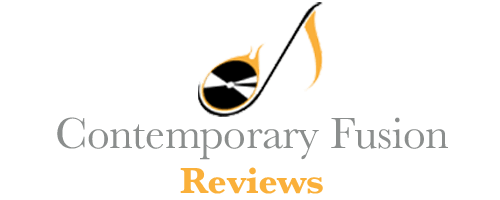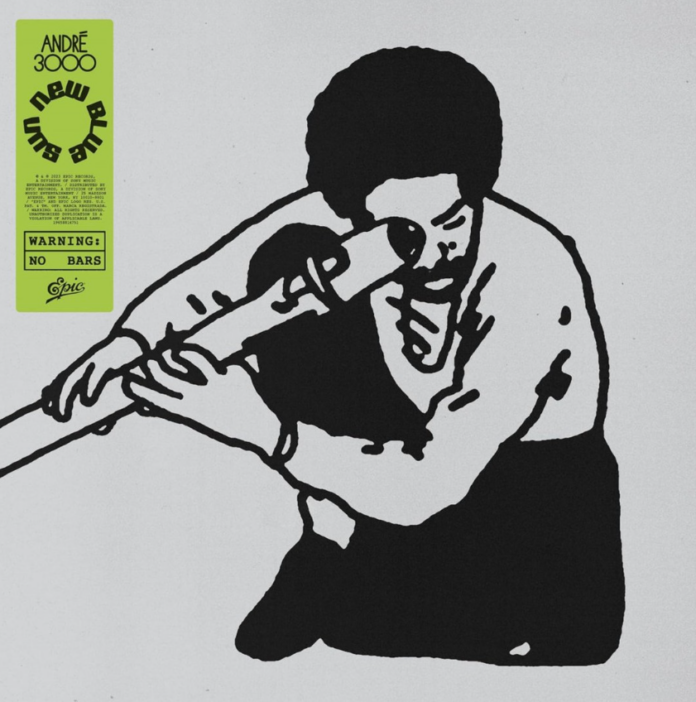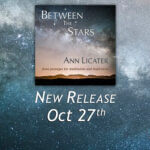Antonio Johri, Contributing Writer for Music and Pop-Culture, weighs in on the resounding impact of New Blue Sun.
Fresh off a GRAMMY®️ win from his appearance on SCIENTISTS & ENGINEERS (from Killer Mike’s category-sweeping “Michael”), André 3000 affirms his continued relevance in the American rap canon. For the few that might not know him, André 3000 is one-half of the legendary rap duo Outkast, the other half being Big Boi. They dropped multi-platinum gems like Hey Ya! (which now sits at over 1 billion streams on Spotify) and Ms. Jackson, which is filled with inflected rap flows and banging drums (which is about to arrive at the same milestone, by the way).
Since his career in Outkast, André has been anything but inactive in music and other forms of media. He contributed through the production of songs like Beyonce’s “Party,” did a 20th-anniversary performance for Outkast at Coachella, and André even created his own film company, Moxie Turtle.
André has achieved things in one chapter of his career that many rap artists or artists at large dream of attaining throughout their lifetime. He has topped the Billboard album charts, earned a 13-time platinum album, won 6 Grammys, and received the coveted Album of the Year Nod. So, what is the natural progression for an artist who has achieved all this success?
The answer is simple: Experimentation.
However, André initially did not have an interest in music anymore. In an interview with Music Guru Rick Ruben, André expressed his discomfort and lack of confidence about releasing new music. He could not deal with the nitpicking of online critics who would dissect his works down to every syllable and note, which led to him being extremely uninspired.
Most recently, André was mentioned by Kendrick Lamar from Metro Boomin’s and Future’s 2024 collaborative album WE DON’T TRUST YOU.
“If he walk around with that stick, it ain’t André 3K”
— Kendrick Lamar on “Like That”
This reference’s metaphorical meaning could be an entire essay on the current state of rap; however, the literal meaning is simple: The stick Kendrick is referring to is André’s Mayan flute, which started to appear in André’s hand wherever he went in 2019. In an advertisement campaign for the popular streetwear brand Supreme, André was the model of focus. He was depicted in supreme clothing, holding his flute, and he was excited about his newfound creativity. To paraphrase his words, he said he could only go so long without creating something, and his creative hunger was growing until he needed to feed himself. He seems to have escaped the endless hole of online criticism by completely pivoting his music style and shocking his audience with an album that no one would have ever expected.
André’s newfound inspiration has given us a 1.5-hour studio album composed of only 8 tracks of entrancing neo-ambient flute music.
For the sake of my sanity and yours, I will be referring to the tracks of the album as Track 1, Track 2, etc., due to the sentence-long song titles. Here is the tracklist below for reference:
Track List:
| 1. | “I Swear, I Really Wanted to Make a ‘Rap’ Album but This Is Literally the Way the Wind Blew Me This Time” | ||
| 2. | “The Slang Word P(*)ssy Rolls Off the Tongue with Far Better Ease Than the Proper Word Vagina. Do You Agree?” | ||
| 3. | “That Night in Hawaii When I Turned into a Panther and Started Making These Low Register Purring Tones That I Couldn’t Control … Sh¥t Was Wild” | ||
| 4. | “BuyPoloDisorder’s Daughter Wears a 3000® Button Down Embroidered” | ||
| 5. | “Ninety Three ‘Til Infinity and Beyoncé” | ||
| 6. | “Ghandi, Dalai Lama, Your Lord & Savior J.C. / Bundy, Jeffrey Dahmer, and John Wayne Gacy” | ||
| 7. | “Ants to You, Gods to Who?” | ||
| 8. | “Dreams Once Buried Beneath the Dungeon Floor Slowly Sprout into Undying Gardens” | ||
When it comes to the context of reviewing this album, André does not rap, talk, or even say anything throughout the improvisations of each track; he is silent. Therefore, the review cannot reference any of his previous works or even use them as a reference point to show where André is creatively, which means his album is performing the task of its creator. Fans cannot nitpick what they do not know, and since no one has ever heard a flute album from André 3000, this is new territory, and it can only be assessed against other improvisational jazz, new age, and ambient music.
Going through this album felt like standing in the most humid jungle, surrounded by trees of immense heights, while feeling the wildlife crawl around you as if you were just another stone in the dirt. For more conventional albums, I usually look towards the producer or songwriter for more guidance on the sonic traits. Still, in this case, the only equivalent would be dissecting André’s selection of flutes. The first and most popular of the selections is the Mayan Flute André, which was heavily utilized in the making of this album. The flute comes from a long line of Mayan artisans who create these “double flutes” from wood. The shape of the flute can be imagined as two flutes, one shorter and one longer, put together to make a parallel sonic character. Essentially, both sides of the flute create a lower and higher sound, which complement one another to make this harmonized sound parallel yet united. It is entrancing and used within Mayan temples to distract the mind from thinking and stay meditative. In this album, the flutes fulfill this task; they are really able to relieve an agitated and stressed mind. Other notable instruments he uses are bamboo flute, contrabass flute, and digital plugin flutes. In short, most of the tracks flow into one another, so the body of work is quite fluid. However, every track has a different flavor that defines this ambient, tranquil landscape he paints with his flute.
It would be tedious to describe each track in detail since the improvisation can only be described in words. Below are quick blurbs of the most interesting tracks, describing the emotions and instrumental dynamics of each cut on this mesmerizing yet sometimes challenging album.
Track one begins with these hopeful synth-pad chords, with slight murmurs of gongs, chimes, crash cymbals, and trippy bird chirps. Once you get into the track, a flute lead takes the spotlight. You can hear the improvisational spirit through how André sometimes modulates in and out of key on his woodwind instrument. It uses a nostalgic melody that can make you smile or shed a tear. Track three was also an ear-catching piece, where there are snarls of jungle animals, which was a result of André’s Ayahuasca trip. Ayahuasca is a psychedelic drug, and André went through different phases using the drug and even started “toning,” which made him mimic the noises of a panther. Track five is probably my all-time favorite on this album due to how André wears his influences on his sleeve. The track begins with this groovy hip-hop bass and mesmerizing chords. It sounds like the perfect landscape for André to spit an entire verse, but instead, the most interesting flute starts chirping. The shell percussion tickles your ear as the bass drones continuously. This track is hypnotic, and the sound selection is top-notch as it evolves and develops over only 3:50 (compared to every other track that goes over 10 minutes).
This album, compared to other new age-ambient music, is nothing revolutionary, but this can be said for the majority of artists trying out a new genre. In my eyes, it stands as a complete rejection of the modern music industry. Modern pop music relies on having crisp vocals at the center of tracks, carefully designed catchy lyrics, and low run time for each track. André breaks all of these conventions with his album. His album’s protest can sometimes be a little exhausting since the closing track is 17 minutes long, but regardless, you must respect André’s commitment.
I feel the real value of this album lies in the 10,000 hours André 3000 put into learning an instrument and then creating a body of work with that knowledge. There is beauty in André’s pure curiosity and extensive research of his instruments that come through on this project. He truly mastered his craft, and it shows he is not just a one-trick pony. I would not be opposed to a sequel to New Blue Sun “2.”
Editor’s Note: an impressive touring schedule is available at andre3000.com
Listen to a New Blue Sun: https://andre3000.lnk.to/NewBlueSun
Watch the André 3000 performance Live on the Late Show with Steven Colbert:

Sources:
- https://people.com/andre-3000-turned-into-panther-during-ayahuasca-trip-in-hawaii-changed-person-8402148
- https://hypebeast.com/2022/8/supreme-andre-3000-tee-release-info
- https://www.distractify.com/p/what-kind-of-flute-does-andre-3000-play
- https://www.complex.com/music/a/tracewilliamcowen/andre-3000-rick-rubin-podcast-interview-making-music
- https://districtmagazine.ie/news/an-oral-history-of-andre-3000-and-his-flute/
- https://m.youtube.com/watch?v=_wDOuT3enOY
- https://www.revolt.tv/article/2020-09-06/70786/andre-3000-was-spotted-randomly-playing-his-flute-again
- https://slate.com/culture/2019/06/andre-3000-lax-airport-flute-antonia-cereijido-guillermo-martinez.html




